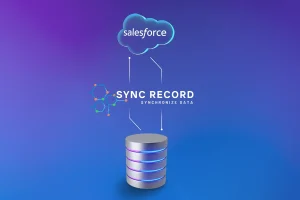We are all human beings who need a certain amount of privacy, but at the same time we don't want to be bothered with clutter that we don't need. We only want to be presented with information that is applicable and of value to us. Therein lies the paradox. In the context of, for example, the AVG legislation, the use of Data Management Platforms and the disappearance of, for example, Google Tracking cookies, it is becoming very complex to determine what you, as an organization, can and may still do in the area of sales. How do we ensure that we can continue to sell and grow efficiently, while respecting the privacy and wishes of our prospects? In this article, we highlight a few trends to consider.
AVG Legislation
Already on May 25, 2018, the AVG legislation came into force and still we see that there are organizations that are struggling to comply with the set rules. Of course, there is the Personal Data Authority that strictly supervises this, but practice shows that the larger players and larger incidents are looked at first. First Things First… This makes sense, as it turns out once again that the adoption of these types of developments often takes longer than expected. If you peel off all the rules, the bottom line is that power and control over the user must return to the user. This includes rights, as indicated on the website of the Personal Data Authority.
Am I still allowed to communicate to my customers?
Of course, cyber criminals don’t abide by the set laws. Spam, Scam, Phishing: as long as Internet crime exists, we will not get rid of it. But even well-intentioned organizations don’t always do everything by the rules. One of the most common “violations” of the AVG is not having a “double opt-in” for emailings. Officially, you must have a double opt-in from your newsletter subscribers. That is, someone actively signs up, you send a confirmation email and they confirm by clicking on a link. In practice, we see that they usually work with a single opt-in: you sign up and with that you are in the mailing list. Is that bad? Mwa, after all, they subscribed themselves, and as long as there is an Unsubscribe/Unsubscribe link with each mailing, the subscriber can unsubscribe in a flash as well. But it’s not quite according to the rules.
Opt-in / opt-out
A somewhat larger violation of the rules is the “fingers-crossed” model, where organizations simply did not take any additional measures and hoped that their subscribers did not unsubscribe en masse and mark the mailing as Unwanted/Spam. A mailing that is marked as Unwanted or Spam too often increases the risk of being blacklisted, which blocks the sending of mailings. Not convenient!
What is allowed?
Important to add: the recipient always has the right to be forgotten; to ask for all his/her data to be deleted and communications to be stopped. An exception applies to situations where an organization is required by law to retain your data or has another legitimate interest: for example, communication to ensure the operation of the purchased product or service. Consider service emails, product recalls, updates, etc. For this reason, it is good to give the recipient the option to unsubscribe from commercial mailings through the preference settings and still receive functional mailings.
Number of subscribers not blissful
Of course, you have to deal with the law of large numbers. Statistically, if you have a lot of subscribers, you are more likely to have a sale. But what is more important is the engagement and purity of your data. That your subscribers actually want to receive your mailing because it is relevant and of value to them. So even if you are running down in numbers, it may still not be at the expense of your profitability. The better your offer matches the recipient, the better your results will be.
Google and Privacy
Two words seemingly at odds with each other. For years, Google’s tracking cookies have allowed it to collect data on individuals in an unrestrained manner. The more we learn about it, the more fearful and distrustful we become. You may recognize the example of being offered a route suggestion by Google on your phone or smartwatch when you get into your car, even though you haven’t entered anything into your navigation system… Google recognizes your patterns and movements and tries to “help” you with them. The AVG has already brought the necessary restrictions (such as pseudonymization in Analytics), but more changes are coming, ushering in a cookie-free future. The alternative is called Privacy Sandbox….
Google tracking restrictions delayed to end 2023
These Privacy Sandbox (initiated in 2019) changes were originally scheduled for 2022, but the data marketing industry says it needs more time to prepare for them. We already saw this when the AVG came into force in the email marketing industry, but again, all good intentions notwithstanding, it always takes a long time to get adoption of new rules and guidelines. Google has responded that they are dealing with this within reason and have therefore postponed the deadline.
Basically...
Big part of the Privacy Sandbox is the so-called Federated Learning of Cohorts, or FLoC. The name says it all: tracking is no longer done at the person level, but at the cohort level or group level. If you regularly visit the Apple website, follow OneMoreThing, and watch Apple’s latest keynote on Youtube, you will be classified in the cohort “Lovers of Apple.” This still gives the ad industry the ability to show a user relevant ads without accessing personal data. Even Google itself claims not to have the personal information. In principle, that is… Because there is already some criticism about this technology. The main privacy concern is that as long as you have enough data points, you can still trace the information in a cohort back to a person. FLoC would use so-called Fingerprinting to make tracking not harder, but easier! In the process, there are ongoing discussions about Google’s dominance in this area.
Hold on a little longer
So we are not cookie-free for the time being…. There are many and large interests and that kind of process always takes time. In time, everything will become clear, but until then, there is no reason to panic; not for individuals, nor for advertisers. However, there are steps organizations can take to get a better handle on personal data within their marketing stack. Because the reality is that insight and overview are often lacking.
Personal data: insight and control
The more complete the profile we have of a person, the better the ability to match an organization’s offerings to that person’s needs. It’s about data quality. But the more data we have on a person, the greater the invasion of privacy. Of course, there are data processing agreements and all kinds of security measures (as defined in the ISO 27001), which should ensure that personal data does not end up in the wrong hands. But for those who really want to get a grip on personal data, a Data Management Platform is an interesting option.
Data Management Platform
A Data Management Platform (DMP) collects data from various sources about a customer profile, organizes and visualizes that data, and manages and activates that data (usually). You can see it as a management layer in which the sum of all customer behavior regarding your brand, service or product becomes visible. This allows you to communicate in a more targeted way: at the right time, through the right channel and with the right message to the right person.
With a DMP, you are building a complete profile of a person and there are, of course, AVG risks associated with that.
But a DMP actually provides a grip in this area. Especially in complex marketing systems with different tech stacks, without a DMP it is difficult to, for example, give a person insight into their personal data and have them change it, because that data is in different “silos” that do not communicate with each other. You can then very difficultly provide for the right to data portability (deliver all data to the person in a common digital format). With a DMP, you unlock the data in different sources, such as from your CRM system, ad pixels and third party audience segments.
With it, you make visible how personal and customer data moves across your various platforms, from source to action. You can immediately see how and where the data was collected and under what conditions of consent. Once a person exercises their right to amend, forget or data portability of their data, you have immediate control over it. In addition, your data quality will be greatly improved, because every change will be immediately updated in the source system. An additional benefit is that the insight provided by a DMP often reduces advertising costs, in addition to gaining compliance.
Want to learn more about the value of a DMP or the impact of Privacy on your Marketing and Sales? Then feel free to contact one of our specialists. We are happy to help you.

Ask our specialists
Want to learn more about Data Management Platforms, such as Salesforce? Then feel free to contact Woen Hing Woei, Founder and Consultant at musQueteer


